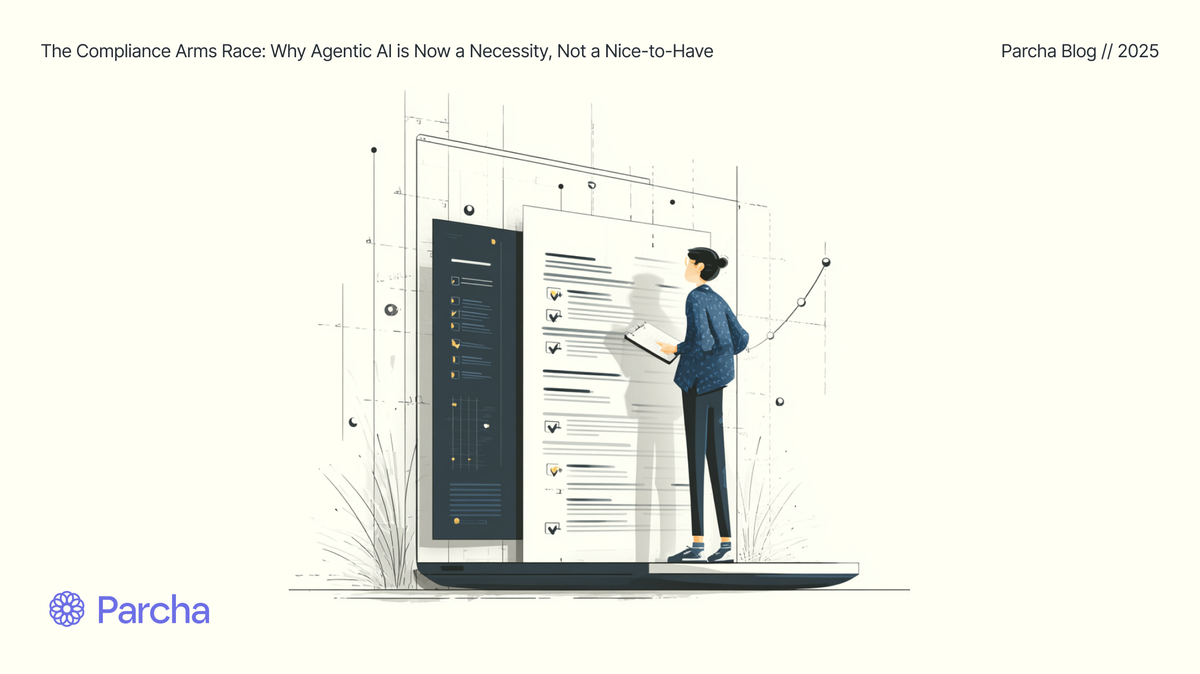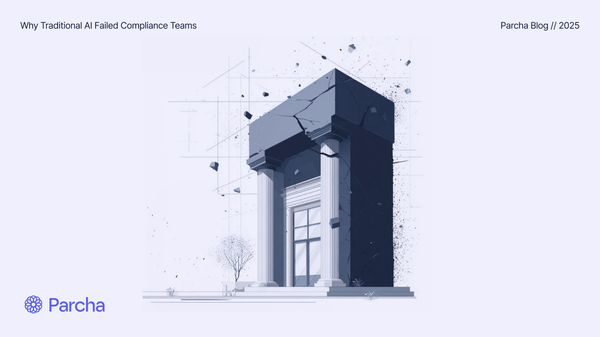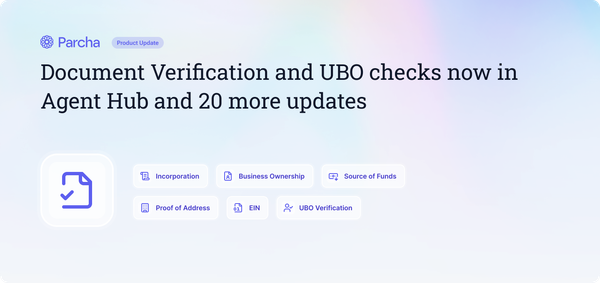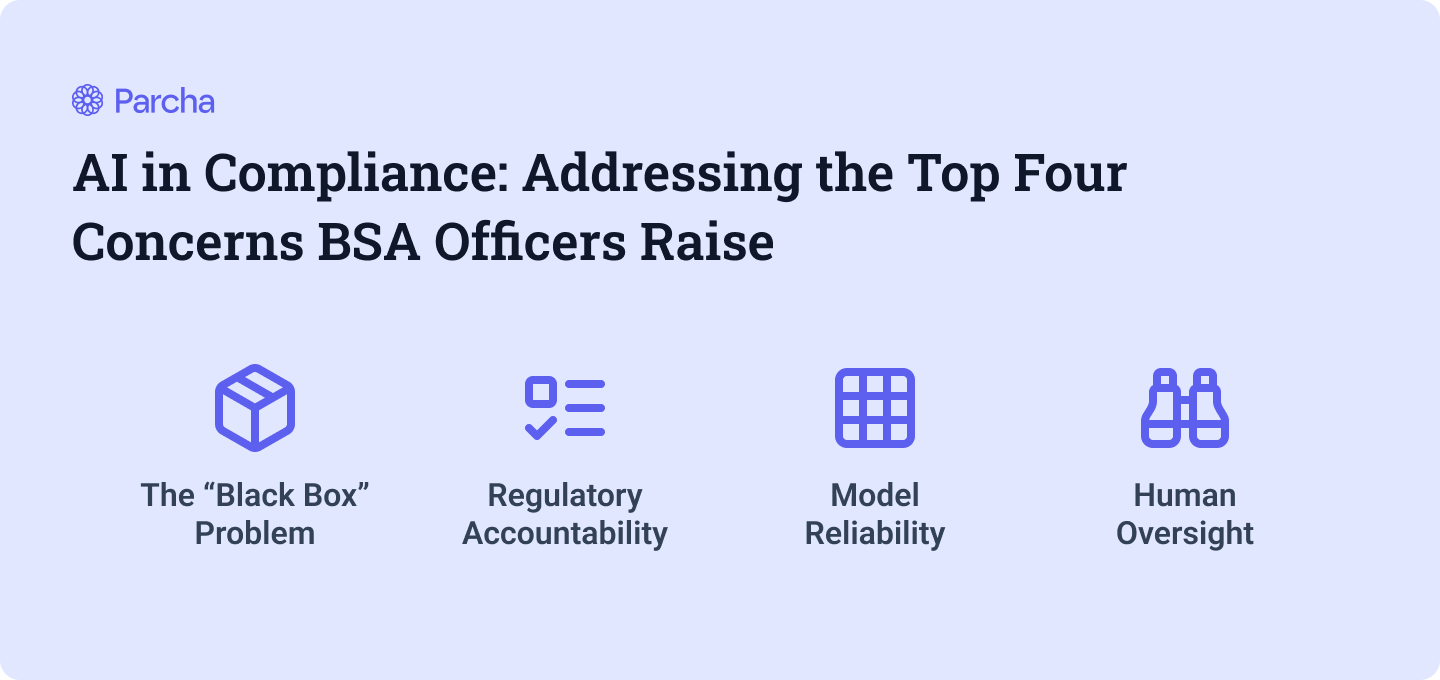The Compliance Arms Race: Why Agentic AI Is Now a Necessity, Not a Nice-to-Have

Generative AI has transformed financial crime. Deepfakes, forged documents, and synthetic personas can now be spun up in minutes. Criminal networks iterate faster than ever, testing new evasion tactics at machine speed.
The trouble is, compliance is stuck in the manual era. Analysts toggle between spreadsheets and manually verify IDs like it’s 2010. It’s an arms race, but only one side has upgraded its weapons.
Today’s reality calls for automation. Tools that can emulate human review, perform document validation, translate non‑standard formats, and provide transparent audit logs in seconds.
With AI agents customizable via intuitive dashboards, workflows can be deployed in minutes, not months. Helping accelerate KYC/KYB checks, due diligence, and remediation.
AI Is the Threat, And the Solution
Yet compliance leaders have been understandably hesitant to adopt generative AI. Its black-box reasoning and tendency to hallucinate pose serious legal risks in a field where accuracy and accountability are non-negotiable.
And here, agentic AI offers a new path. One where compliance teams can act, reason, and adapt just as fast as the threats they’re facing, with transparent, auditable decision-making aligned with regulatory standards.
Welcome to the new frontline.
The Compliance Leader’s Pain Point: Drowning in Manual Tasks
Every day, your analysts spend 60-80% of their time buried in manual tasks such as:
- Cross-referencing names across half a dozen systems
- Updating spreadsheets
- Chasing down missing or incomplete data
The tools are fragmented, the workflows redundant, and the cognitive load high. Your analysts are overworked, not under-skilled.
They’re not investigating risk, they’re babysitting it. Instead of monitoring AML red flags, they’re stuck reconciling typos, decoding outdated PDFs, and checking if the address on file is actually residential.
Every hour spent on routine sanctions screening, adverse media checks, or address verification is an hour lost responding to real risk. And every delay opens the door to missed PEP matches, stale watchlist data, or overlooked beneficial ownership.
Meanwhile, good customers are stuck waiting. Manual reviews stretch onboarding timelines, triggering drop-offs, complaints, and lost business. And under pressure, mistakes creep in: a missed red flag here, a misfiled SAR there.
Fragmentation Fuels Vulnerability
Picture this: A new customer signs up for your fintech app. To verify them, your team jumps between:
- An ID verification platform
- A sanctions list database
- Internal CRMs
- A compliance spreadsheet tracking onboarding status
All just to confirm legitimacy.
This fragmented, manual process eats up valuable time. And while your analysts are busy stitching together risk signals from disconnected tools, gaps in oversight grow. A missed PEP flag, an outdated address, or a misclassified entity can slip by unnoticed.
At the same time, the customer experience suffers. Risk-based onboarding timelines stretch, compliance queues back up, and SLA breaches become the norm.
By the time a review is complete, the context may already be stale, and your risk profile inaccurate.
Agentic AI Becomes the New Strategic Advantage
For the last few years, compliance leaders have trodden cautiously around AI: experimenting with small pilots, wary of hallucinations, opaque logic, and legal liability. That caution was justified. Generative AI models, while powerful, operate as black boxes.
They generate outputs without clear traceability, making them risky in high-stakes, regulated environments.
Agentic AI is different.
Unlike generative models that passively produce outputs when prompted, agentic AI actively takes goal-oriented action. It:
- Reasons through complex, multi-step workflows such as sanctions screening, PEP checks, and adverse media review
- Operates within clearly defined rules and compliance controls
- Functions as an autonomous teammate: Rather than just making suggestions, agentic AI executes tasks like verifying addresses with documents, matching names across watchlists, parsing ownership structures, and escalating edge cases with context-aware summaries
- Maintains a real-time, auditable trail of every decision it makes
In short, it doesn’t just think. It acts, with oversight and accountability built-in.
And for compliance leaders, this is a game-changer. Agentic AI handles in seconds the repetitive tasks that would’ve taken a junior analyst hours to do.
The impact is immediate: analysts get their time back, errors decrease, and AML decisions become faster, more accurate, and easier to defend during audits. Your compliance workflows evolve from reactive to proactive, with none of the regulatory guesswork.
AI that Goes Beyond the Hype
And this isn’t experimental technologytech. AtPlatforms like Parcha, we have built enterprise-ready, compliance-grade AI with explainability, access controls, and embedded risk logic at the core.
Compliance leaders can deploy these agentic systems with confidence, knowing they:
- Can easily be configured as policies changedAdapt to new policies
- Are smart enough to understand edge cases and nuancesLearn from edge cases
- Analyze thousands pieces of evidence as thoroughly as humans.Self-correct without sacrificing traceability
Every action is explainable, every decision logged. Ensuring that your team stays audit-ready at all times.
Inside the Guardrails: Why Agentic AI Meets Compliance Standards
Agentic AI is designed from the ground up with guardrails that make it safe, reliable, and regulator-ready.
Here’s how it stays secure while delivering speed and scale:
1. Built-in Explainability and Audit Trails
Every action taken by agentic AI is logged, timestamped, and tied to a clear decision path.
When verifying a customer’s ID, the system doesn’t just approve or reject. It outlines which document fields were verified, which databases were queried (e.g., sanctions or watchlists), and how the decision aligned with your escalation logic. This information can be accessed at any time, fully auditable and ready for regulators or internal review.
An agentic system reviewing a risk event won’t just flag it. It will generate a structured explanation. For instance: “Escalated due to a match with a high-risk jurisdiction and prior adverse media indicator, per Section 4.1 of internal policy.”
This traceability ensures your team is always audit-ready, and regulators can follow the logic, step by step.
2. Role-Based Access Controls
Agentic systems enforce strict user permissions based on roles and responsibilities, ensuring sensitive actions can only be taken by authorized personnel.
A junior analyst, for example, may be able to view flagged profiles or documents but cannot clear or escalate them without approval. A compliance officer has broader access but is still restricted from altering audit logs or modifying critical workflows.
This enforces strong internal controls, helps meet jurisdictional compliance requirements, and aligns with frameworks from regulators like FINRA, MAS, and ASIC.
3. Operates Within Tight Compliance Parameters
Agentic systems are designed to operate within strict, predefined guardrails. They follow institutional policies, regulatory requirements, and jurisdiction-specific rules. They also adhere to escalation thresholds and edge-case protocols set by your team.
During onboarding, if a customer triggers a sanctions or Politically Exposed Person (PEP) match, and there isn't sufficien evidence to determine it's a false-positive, the AI agent will not attempt to auto-resolve. It will pause the workflow, generate a contextual summary, log the decision path, and escalate to a human reviewer. Exactly as your policy dictates.
There are no shortcuts. No improvisation. Just consistent, policy-aligned execution with built-in transparency.
A Strategic Question Worth Considering
This evolution raises a strategic question for compliance leadership: when risk signals surface faster than manual reviews can process them, and regulatory complexity continues to scale, do manual processes create competitive disadvantage?
The question isn’t whether to adopt AI in compliance. Many institutions are already experimenting in this area. The more precise question is how to implement it in ways that preserve control, ensure transparency, and meet regulatory expectations across jurisdictions.
Agentic AI offers one path forward: systems that act within policy, leave an audit trail, and elevate, not replace, human judgment.
Parcha enables this shift, bringing agentic AI into compliance operations with auditable, policy-driven workflows that help teams move faster, stay accurate, and meet regulatory demands with confidence.
Over the coming weeks, we’ll examine in greater detail how compliance teams are approaching this transition.





